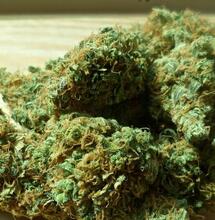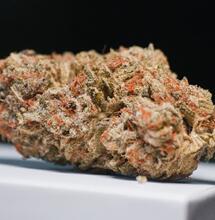What is Strain Analysis?

Cannabis has many medicinal properties, ranging from treating pain and inflammation to reducing stress, anxiety, insomnia and PTSD. Cannabis plants are abundant with cannabinoids such as CBD, CBN, THC, CBC, CBG, etc. When these naturally occurring cannabis compounds enter the human system, they interact with the body's endocannabinoid receptors and trigger various physical or psychoactive reactions. The effects of ingesting or inhaling cannabis can vary greatly depending on the strain used. This is what makes strain analysis essential and critical to the production of medical cannabis.
When a new strain is created, cultivators typically select a number of traits to generate the effects they want. It's a similar process to how breeders create particular characteristics in animals such as dogs or horses. Cannabis strains are often described as being indica, sativa, or hybrid (which combines both indica and sativa types of strains). For the medical cannabis industry, strain analysis is the essential first step before producing new goods and products.
Why is strain analysis important?
An analysis helps pin down the most outstanding flower qualities that can then be purposed to treat various health conditions. When scientists perform strain analysis, they profile the genetics of a particular cannabis flower and predict its effects on the medical user. This process is vital for operators to develop high-grade cannabis goods and products that can efficiently treat health issues such as pain, anxiety, restlessness, etc. It also ensures manufacturers are aligned with national and local labeling requirements.
Some of the strains with emphasized medicinal qualities, such as therapeutic and sleep-inducing indicas, have been long consumed by recreational users. Heavy on cannabinoids such as CBD or CBN, the medical sector often eyes these flowers to assess their potential for medical application.
How is a strain analysis conducted?
The most common method used for cannabis strain analysis is Polymerase Chain Reaction (PCR) testing. PCR tests are often used to detect genetic material from specific organisms, such as viruses. However, in cannabis labs, this type of test enables scientists to amplify small fragments of DNA in cannabis flowers and carry out a detailed molecular and genetic analysis.
Depending on the lab, different variations of PCR testing are used. Gradient PCR machines offer fast and reliable results, while PCR workstations and cabinets ensure protections are in place against contaminants during the DNA amplification and manipulation process.

What are other tests performed?
Medical cannabis is highly regulated and operators are obliged to perform rigorous testing before offering products as therapy. Samples of finished cannabis products, which can include fresh or dried flower, extract or tincture, concentrate or edible — in fact, any item that may have been infused with cannabis — are routinely tested in other lab tests to determine full cannabinoid and terpene profiles or confirm that the sample is free of any contaminants such as heavy metals or pesticides.
Cannabinoid analysis
Over 100 active compounds are present in any cannabis strain. All those compounds determine the effects and therapeutic qualities of the flower. A cannabinoid analysis relies on standard analytical chemistry techniques to identify and quantify flower compounds. Unsurprisingly, THC and CBD are the most common cannabis compounds tested in labs worldwide.
One of the most helpful analysis methods for THC and CBD in medical cannabis is High-Performance Liquid Chromatography (HPLC) which uses pumps to pass a pressurized liquid solvent containing the sample mixture through a column filled with solid adsorbents. The method helps scientists to separate, identify and quantify each compound in the mix, or in our case, the cannabinoids. Each cannabinoid interacts differently with the adsorbent material, resulting in different flow rates for the various components and separating the component once they flow out of the column. Another method is Gas Chromatography (GC), where the compounds in a mixture are isolated by injecting gas or liquid. This method can also help prepare pure compounds from the mixture.
Scientists use these chemical analytics tools to measure all active ingredients in cannabis, including THCA in fresh flower or CBN, which forms as THC slowly degrades in the process of drying and storing. For manufacturers, it is essential to know the level of each of these cannabinoids or acids, as all of them influence the physical and psychoactive effects attributed to the medical cannabis product.
Terpene analysis
Terpenes are aromatic compounds found in all vegetations, including cannabis. It is these compounds that determine the varying tastes and smells of cannabis strains. It is also known that terpenes reinforce some of the cannabinoid properties, therefore the increased interest in terpenes profiling in recent years. Before, there was less emphasis on this category of compounds.
Standard methods of terpene analysis include Gas Chromatography combined with other techniques such as Mass Spectrometry or Flame Ionisation detection. Mass Spectrometry helps scientists measure the ratios of ions associated with the compounds in the mix and thus determine which signatures are most common. Integrated into stationary or portable instruments, standalone flame ionization detectors are commonly used for monitoring landfill gas emissions or international combustion engine emissions. The same devices are apparently also applied to profile things like terpenes in cannabis.
Heavy metal detection
Analytical methods such as Mass Spectrometry can also help scientists detect other elements that might contaminate cannabis crops. Contaminants such as mercury, lead, cadmium, arsenic, or copper can be present in the soil or water and can be consumed by crops during cultivation. Separate lab tests on these contaminants ensure that the product that reaches the dispensary nearest to you is free of these elements or that it's below levels considered harmful for human exposure.
Other lab tests can also assess if cannabis plants have been exposed to pesticides or other chemicals. Or whether the product contains solvent traces such as ethanol, propane or butane, commonly used in cannabis extraction to prepare wax, distillates, and other derivatives. While solvents help get the most of the cannabis flower potency, the presence of trace solvents in the finished product can be toxic.
So, as easy as it is to eat CBD gummies or roll a joint to medicate your back pain, it's not as simple to take advantage of all the medicinal properties in cannabis flowers and manufacture safe products for consumption.







